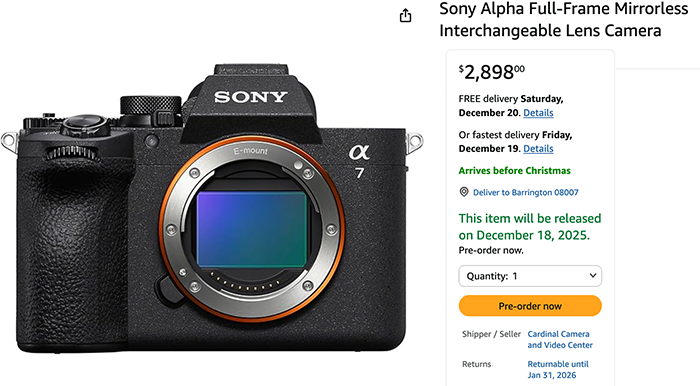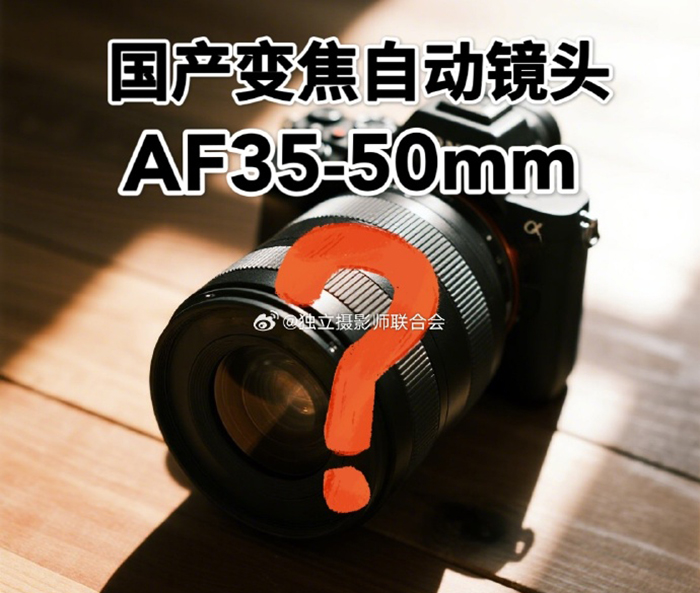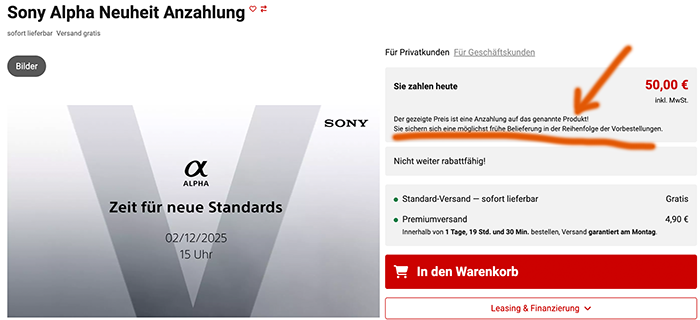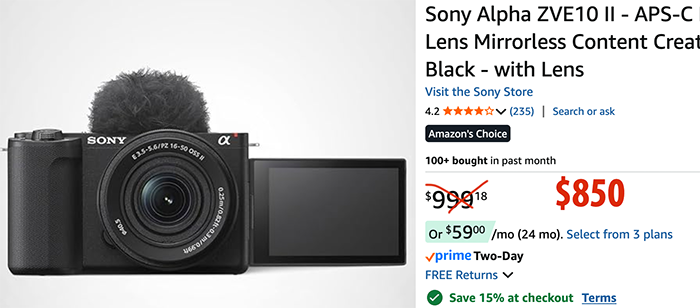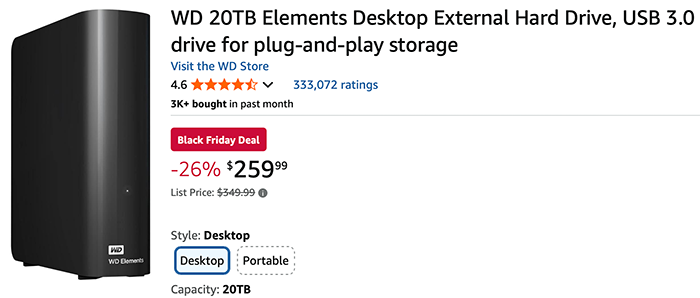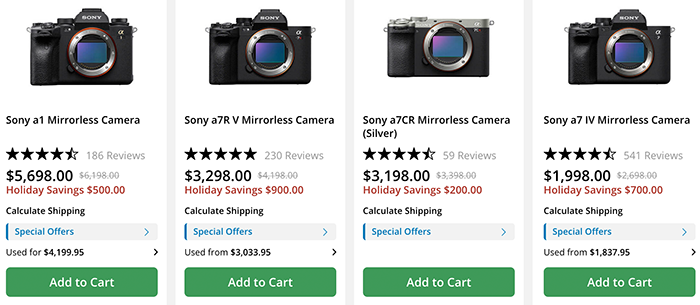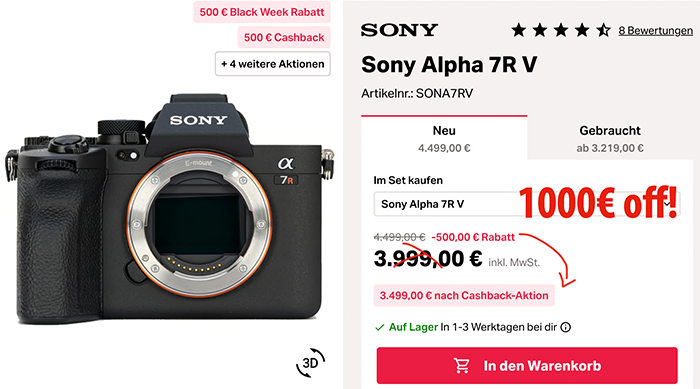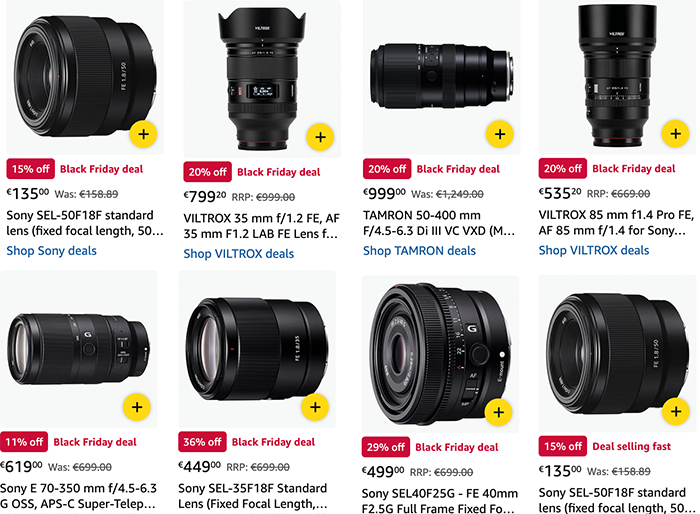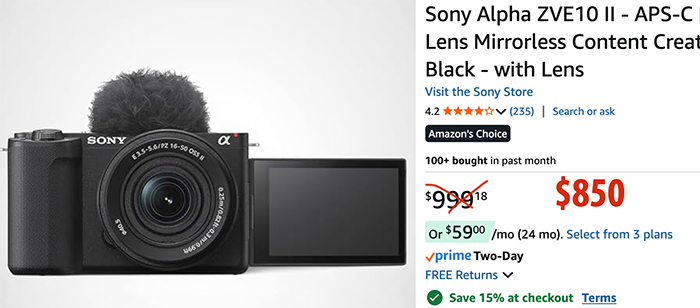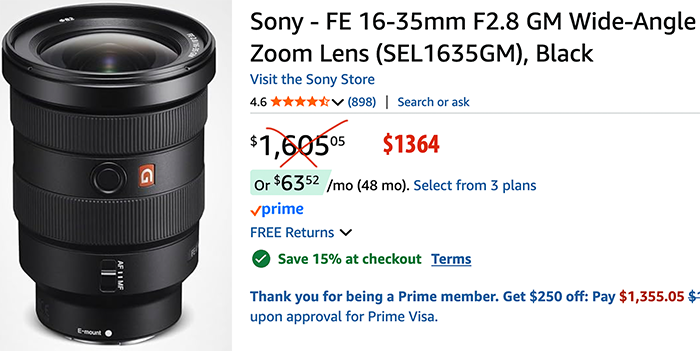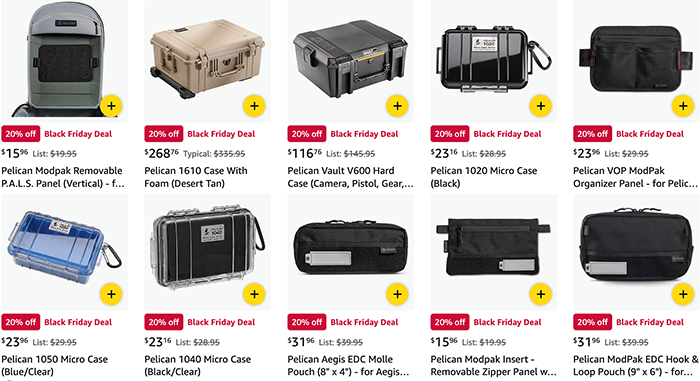Some stores are sort of already accepting Sony A7V preorders :)
I told you may times only a small batch of cameras will ship before Christmas. Some stores like the German Fotoerhardt are already accepting early deposit to secure your prime spot:
I The price shown is a deposit on the product mentioned!
You secure the earliest possible delivery in the order of pre-orders.
Smart! ;)
Sony A7V has some product pages at BHphoto, Amazon, Adorama, Fotokoch, Foto Erhardt, Calumet, WexUK.
–
Sony A7V rumored specs :
- 33MP partially stacked sensor
- 30fps 14Bit RAW in electronic shutter and 10fps in mechanical
- Pre Capture
- 8 stops IBIS
- 4k60p no crop, 4k120p with crop
- no Open Gate
- new AI chip like the Sony A1II
- Free-Angle Tilting 3.2″ Touchscreen LCD
- 1 SD slot and 1 hybrid SD/CFexpress Type A slot
- no C5 button
- improved EVF (5.6m dot?)
- dual USB-C port (gets rid of the micro-USB port)
- Same Sony A7rV body design.
- price close to $3000
- Announcement on December 2
- Limited batch ships before Christmas
- Price: 2999€
- Sony A7V Preorders (open on Dec 2): BHphoto, Amazon.
Three lenses are on Sony’s roadmap:
- 100-400mm f/4.0 GM
- 100-400mm G (variable aperture)
- ultra wide angle f/2.0 GM zoom

